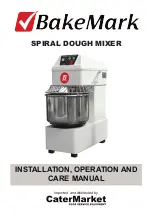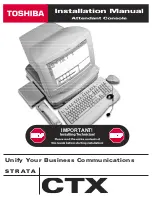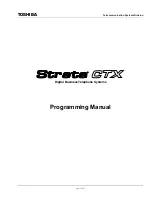
WZ20S User Guide
29
Club Installation
The WZ20S versatility and number of source inputs makes it ideal as a high
performance installed club console.
Hybrid application
The console provides facilities for dance/DJ and
live/cabaret mixing. As a ‘house’ mixer it would be expected to alternate
between performance DJ’ing, house DJ, live acts, cabaret, karaoke and
background music.
Dance/DJ
Plug the music sources such as CD and record decks into the
stereo channels. An RIAA preamp option can be installed for direct connection
to record decks. Typically, the guest DJ would plug his favourite mixing ‘box’ into
a stereo channel. There are enough stereo inputs to leave all sources
permanently connected. A DJ microphone may be plugged into a mono
channel.
Live/cabaret
The mono channels provide facility for mixing up to 4
microphones for live acts such as musical duos and cabaret. Many acts use
backing tracks such as CD or MiniDisc. These should be plugged into stereo
channels. Use pre-fade AUX sends to feed foldback monitors such as stage
wedge speakers. Use post-fade auxes to feed effects processors such as
reverb, typically applied to vocals or guitar. The wet reverb effect can be added
to the mix by returning it to an available stereo channel or an EXT input. Make
sure the correct EXT routing switches are selected.
Grouping
You can create a ‘live’ group by assigning MIX1 as a stereo
subgroup to MIX2. Here, the live act microphone, backing tracks and effects
returns should be routed to MIX1 only. The ‘DJ’ sources should route direct to
MIX2 only. This lets you control the live mix with a single fader, for example to
turn the live sources off when the DJ is performing.
Output example 1
MIX2 feeds the house system with its MONO output driving
the sub bass or additional zone speakers. Use the additional TRS jack outputs
to drive a sound-to-light controller or for recording the show. MIX1 provides a
‘live’ subgroup as described above. Select the underpanel switch above the
fader. Alternatively, MIX1 could feed an independent stereo zone. This could
be assigned for music mix only, leaving the DJ and MC microphones active in
the main performance or dance floor area only.
Output example 2
Here, MIX1 feeds the house system. MIX2 is assigned to
provide a music only zone feed. This could be the DJ booth speaker system or
independent music only zone. The additional TRS jacks can be used for
recording music only. The MONO output could feed a sound-to-light controller
not affected by the DJ or other microphones. Post-fade auxes can be used to
feed independent mono zones. The main outputs have independent meters,
balanced XLR connections and inserts for plugging in processors such as
limiters and EQ.
Monitoring
Independent headphones and local monitor outputs satisfy the
specific needs of club mixing. Use SPLIT PFL to cue the next source in one ear
while keeping the program in the other with relative levels displayed on the
meters. This is ideal when matching music styles or beat. The local output
feeds the booth monitor speakers. Disable PFL if you want headphones only
cueing. The booth speakers can be muted (or optionally attenuated) by
pressing the DIM switch. Alternatively, use the MIX2 output to feed the booth
speakers if music only is required.




































